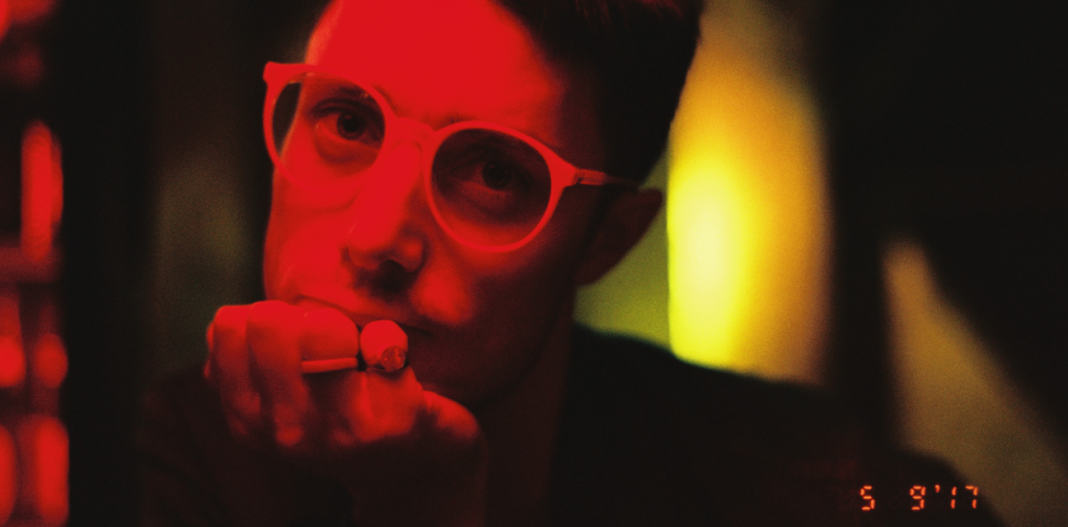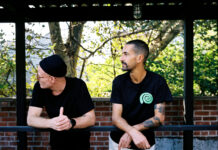All photos: George Nebieridze (Call Super)
There’s few DJs that refer to themselves as “versatile” and get away with it, but Joseph Richmond-Seaton is one of them. As Call Super, the Berlin-based Brit has carved out a niche for himself with sets worthy of the label. As a producer, Seaton similarly navigates through the margins of electronic dance music. Having released a collaborative EP with Beatrice Dillon, Seaton now returns with his second LP for Houndstooth, Arpo. We caught up with Call Super to talk the joy of painting, B2B sets, crowds, Ibiza crowds, and of course his own music.
Three years after Suzi Ecto, you’re releasing your second album Arpo, also on Houndstooth. Can you tell us more about these two projects?
It’s quite a long time between the two albums. And so mentally I have changed, I am in a very different place. The first record I was going through some quite painful times in my life. A close friend of mine died in the middle of the making of the album as well. And the album was made in a few different places – I started it in New York when it was very hot and finished it in Berlin. It was very cold, it was a quite sad time. Whereas this album, I’ve been much more stable. And I think I’ve known what it takes to make an album and been able to have a kind of vision for it, which I think is much more defined. There’s been a greater freedom around the ideas. Those are the two main differences.
Did you have a concept in mind for Arpo?
I don’t really work like that. My work takes on a life of its own. I like things to come from within and to be quite intuitive. The thinking I do is usually away from the actual making of something. Within the album itself – I wanted it to work on different formats in different ways. The way you listen to it on a record, for example: There are five tracks on the A-side, and then you turn over to the B, and it starts again. You’ve been through lots of moods already, through every mood I wanted to be in the record. It’s quite intense. But then on the B, the C and the D it just opens up and it becomes this very expansive space that you can get lost in. A little bit more similar to the first album. And then on the cassette, for example, it’s divided in a different way, so you get quite a different sense of the record, depending on the format that you engage with.
Call Super – I Look Like I Look In A Tinfoil Mirror
In an earlier feature, you talked about the beneficial effects partying, electronic music and drugs can have on personal growth. Many of your track titles contain subtle jokes about drugs, like “Fluenka Mitsu” referring to Mitsubishi pills popular in your early raving days. How do you think your own raving experiences informed the way you make music?
My experiences are pretty positive. But it’s a hard question, because I started to make music when I was very, very young. And I’ve always done it without really thinking about it. I just need to do this, it’s a release. It’s just a kind of personal expression which allows me to be myself and to understand myself. I guess going out, finding yourself within communities and connecting to those communities and learning about yourself is an extension of that. That’s usually why we go out, I think, to try and find something out about ourselves. And I’ve been lucky that these two pursuits are interconnected in many ways.
Coming from a family of visual artists and musicians, how do you think your family history has informed your artistic approach as a musician and visual artist?
I grew up in a house where I always had the space and was encouraged to explore anything I wanted to do creatively. I was always given a piece of paper and pens. We didn’t have a TV for most of my childhood, so I had a lot of time just to draw – and I used to draw endlessly. My dad’s studio was on the ground floor and I would just be in the back of that. Maybe sometimes distracting him. Obviously, that’s not normal. But that was my reality, to be making stuff all day long. I went to art school for a year and then left because the space you’re given in an institution – I always had that in my private life.
You once mentioned that you chose music over visual art out of practical reasons – because you needed less space to create music than to paint. How do you think you would have decided if you have had the space?
I do now. I always made pictures, and I still do. As part of this album I did 300 drawings that were the 7″ sleeves because I wanted to connect the work that I’m doing visually and the work that I’m doing sonically. Sometimes I don’t want to express myself through music, sometimes I don’t want to express myself through visual work. I kind of oscillate between the two. I don’t really see these boundaries very clearly. And I don’t really see music as rooted in genres. I have the music that inspires me and I have the visual stuff that inspires me and everything’s just a bit of a mess in my head that I like to bounce around in between these different things.





